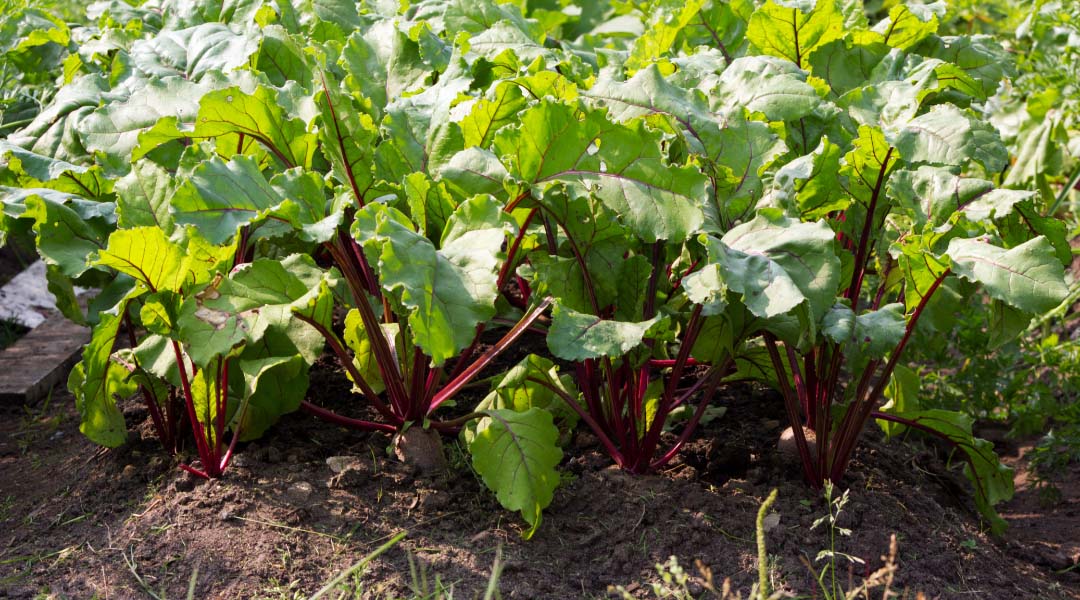Gardening can be a deeply rewarding hobby, but it comes with its fair share of challenges—especially when dealing with areas that receive limited sunlight. For many gardeners, partial shade presents a unique problem. Whether you have a backyard shaded by tall trees or a garden space nestled beside a building, you may find yourself wondering if you can still cultivate a thriving vegetable garden. The good news is that many vegetables are not only tolerant of partial shade but can actually thrive in it.
Purpose of the Article
This article is designed to guide you through the process of selecting and growing vegetables that flourish in partial shade. By understanding the specific needs of these plants and implementing a few gardening strategies, you can transform those shaded areas into productive, vibrant vegetable patches. Whether you’re a seasoned gardener looking to maximize your garden’s potential or a beginner starting with a challenging plot, this guide is here to help.
Partial shade refers to areas in your garden that receive between 3 to 6 hours of direct sunlight per day. The rest of the day, these areas may be shaded, either by structures, trees, or other plants. It’s important to differentiate partial shade from full shade (less than 3 hours of sunlight) and full sun (more than 6 hours of sunlight). Understanding this distinction will help you choose the right plants for your garden.
Factors Influencing Partial Shade in a Garden
Several factors can influence how much sunlight your garden receives. Tall trees, neighboring buildings, fences, and even large shrubs can cast shadows that limit the amount of light reaching certain areas. Additionally, the amount of sunlight can change with the seasons. A spot that gets full sun in the spring may be partially shaded in the summer when trees are in full leaf. Observing how sunlight moves across your garden throughout the day and year will give you a clearer idea of which areas are truly partial shade.
Benefits of Growing Vegetables in Partial Shade
Reduced Risk of Overheating and Scorching
One of the advantages of growing vegetables in partial shade is the reduced risk of overheating and scorching. Vegetables with delicate leaves, like lettuce and spinach, can easily get sunburned in intense, direct sunlight. Partial shade provides a cooler environment that helps protect these plants from the harsh midday sun, leading to healthier, more robust growth.
Improved Moisture Retention
Shaded areas tend to retain moisture better than those exposed to full sun. This means less frequent watering and a more stable growing environment. In partial shade, the soil is less likely to dry out quickly, which is particularly beneficial during hot summer months. This can be a significant advantage for gardeners who want to conserve water or who live in regions with hot, dry climates.
Extended Growing Season
Certain cool-weather crops, such as spinach and broccoli, benefit from the cooler temperatures that partial shade offers. Growing these vegetables in a shaded area can extend their growing season, allowing you to enjoy fresh produce for a longer period. For example, spinach is prone to bolting (going to seed) in the heat, but in a shaded spot, it can continue producing tender leaves for much longer.
Space Optimization
Partial shade allows you to maximize your gardening space by making use of areas that might otherwise be overlooked. Instead of leaving shaded spots empty or covered with non-edible plants, you can turn them into productive parts of your vegetable garden. This not only increases your yield but also makes your garden more diverse and interesting.
Top Vegetables Suitable for Partial Shade
Leafy Greens
Lettuce
Lettuce is one of the most shade-tolerant vegetables. It thrives in partial shade, especially during the warmer months when too much sun can cause it to bolt. Varieties like butterhead and loose-leaf lettuce are particularly suited to these conditions. To maximize growth and flavor, ensure that the soil is rich in organic matter and keep the area consistently moist.
Spinach
Spinach loves cooler temperatures and can suffer in full sun, making it a perfect candidate for partial shade. The cooler environment helps prevent bolting and keeps the leaves tender. Plant spinach in early spring or fall for the best results, and provide ample water to keep the soil consistently moist.
Kale
Kale is another leafy green that benefits from partial shade, particularly in warmer climates. The cooler temperatures help maintain the sweetness of the leaves and reduce the likelihood of bitterness. Varieties like ‘Dwarf Blue Curled’ and ‘Lacinato’ are excellent choices for shaded gardens.
Root Vegetables
Radishes
Radishes are fast-growing and well-suited to partial shade, especially in the heat of summer. They require only about 4 hours of sunlight per day, making them ideal for shaded spots. To achieve optimal growth, ensure the soil is loose and well-drained, and harvest them promptly to avoid them becoming tough and woody.
Carrots
While carrots typically prefer full sun, they can tolerate partial shade, especially if you select shorter varieties like ‘Paris Market’ or ‘Chantenay.’ Carrots grown in partial shade may take a bit longer to mature, but they will still develop well. Ensuring that the soil is free of rocks and well-drained will help in the development of straight, healthy roots.
Beets
Beets are another root vegetable that can thrive in partial shade. They are relatively easy to grow and do well in cooler temperatures. The key to success with beets is maintaining consistent moisture and ensuring the soil is rich in organic matter. Beets can also provide two crops in one—the roots and the edible beet greens.
Herbs
Parsley
Parsley is a hardy herb that tolerates partial shade well. It is a biennial plant, meaning it grows leaves the first year and flowers the second. Plant it in a shaded area where it can receive a few hours of sunlight each day, and you’ll be rewarded with lush, flavorful leaves.
Mint
Mint is notorious for its aggressive growth, but it actually prefers partial shade. In fact, too much sun can cause mint to become leggy and lose its flavor. Plant mint in a contained space to prevent it from spreading uncontrollably, and enjoy its refreshing leaves throughout the growing season.
Cilantro
Cilantro is another herb that can benefit from partial shade, particularly in hot climates. The cooler temperatures in shaded areas can extend the life cycle of cilantro, delaying bolting and allowing for a longer harvest period. Harvest the leaves regularly to keep the plant producing.
Other Vegetables
Broccoli
Broccoli is a cool-weather crop that can benefit from the cooler temperatures of partial shade. Growing broccoli in partial shade helps prevent it from bolting and allows for a more extended harvest period. Provide plenty of water and ensure the soil is well-drained to avoid root rot.
Cauliflower
Cauliflower, like broccoli, thrives in cool weather and can be successfully grown in partial shade. This vegetable is a bit more challenging to grow, but with the right conditions—rich soil, consistent moisture, and some shade—you can achieve beautiful, dense heads.
Peas
Peas are another vegetable that prefers cooler temperatures and can thrive in partial shade. In fact, too much heat can cause peas to stop producing, making a shaded spot ideal. Use a trellis to support the plants and keep them off the ground, which helps prevent disease and makes harvesting easier.
Tips for Growing Vegetable in Partial Shade
Soil Preparation
Soil preparation is key to successful gardening in partial shade. Shaded areas often have cooler, damper soil, which can be less fertile. Before planting, enrich the soil with organic matter, such as compost or well-rotted manure, to improve fertility and drainage. Raised beds can also help by keeping the soil warmer and better drained.
Maximizing Light Availability
In partial shade gardens, it’s important to maximize the limited sunlight available. Consider using reflective surfaces, like white walls or light-colored mulch, to bounce light onto your plants. Pruning back overhanging branches or thinning out dense tree canopies can also increase light penetration. When planting, space your plants adequately to avoid overcrowding, which can further reduce light exposure.
Watering and Fertilization
Shaded areas often retain moisture longer than sunny spots, so be careful not to overwater your plants. Water deeply but less frequently, allowing the top inch of soil to dry out between waterings. Fertilize with a balanced, slow-release fertilizer to provide consistent nutrients over time. Liquid fertilizers can also be applied during the growing season to give your plants a boost.
Companion Planting
Companion planting involves growing certain plants together to benefit each other. In shaded gardens, you can use companion planting to maximize space and improve growth. For example, leafy greens can be planted alongside root vegetables like carrots or beets. The leafy greens will benefit from the cooler, shaded environment, while the root vegetables will help break up the soil and improve drainage.
Common Challenges and How to Overcome Them
Pests and Diseases in Shaded Gardens
Shaded areas can sometimes be more prone to pests and diseases, as the cooler, damper environment can encourage the growth of fungi and attract certain insects. To combat this, practice good garden hygiene by removing dead leaves and debris regularly. Consider using organic pest control methods, such as introducing beneficial insects or using neem oil, to keep pests in check.
Leggy Growth and Poor Yield
Leggy growth occurs when plants stretch toward the light, resulting in tall, weak stems. This is common in shaded gardens where light is limited. To prevent this, plant shade-tolerant varieties and ensure they receive as much light as possible by following the tips mentioned earlier. You can also use support stakes to help leggy plants stand upright.
Soil Moisture and Drainage Issues
Excess moisture can be a problem in shaded gardens, leading to issues like root rot. To improve drainage, consider creating raised beds or adding sand or perlite to your soil mix. Mulching with organic materials like straw or wood chips can help regulate soil moisture by preventing the soil from becoming too waterlogged or drying out too quickly.
Conclusion
Recap of Key Points
In summary, partial shade doesn’t have to be a barrier to successful vegetable gardening. By selecting the right plants—such as leafy greens, root vegetables, and shade-tolerant herbs—you can create a thriving garden even in less-than-ideal light conditions. Understanding the unique challenges and benefits of partial shade, and implementing practical gardening strategies, will set you up for success.
Encouragement to Experiment and Adapt
Gardening is as much about experimentation as it is about following established guidelines. Don’t be afraid to try different vegetables and see what works best in your particular garden. Each garden is unique, and what thrives in one shaded spot may not do as well in another.
Final Tips for Success
As you embark on your partial shade gardening journey, remember that patience and observation are key. Regularly monitor your garden’s light patterns, soil moisture, and plant health, and be ready to make adjustments as needed. With time and care, you can turn even the shadiest corners of your garden into productive, vibrant spaces filled with delicious, home-grown vegetables.


0 Comments